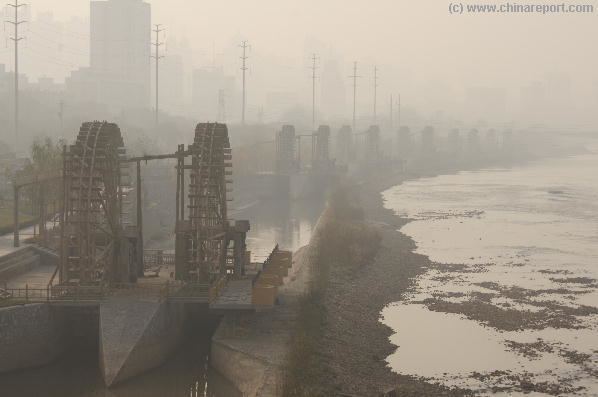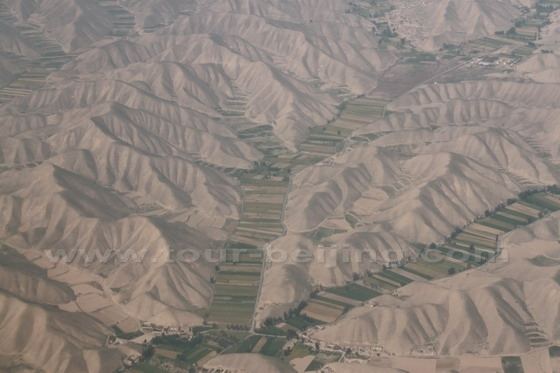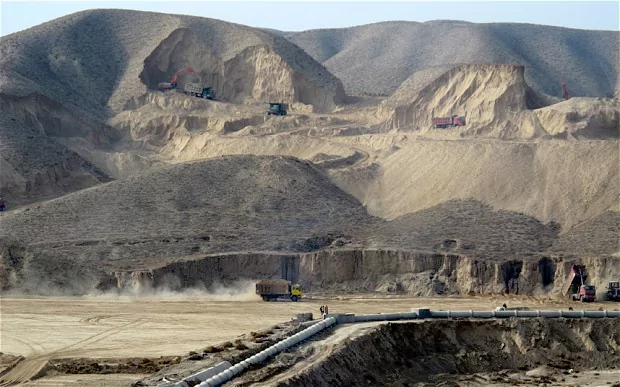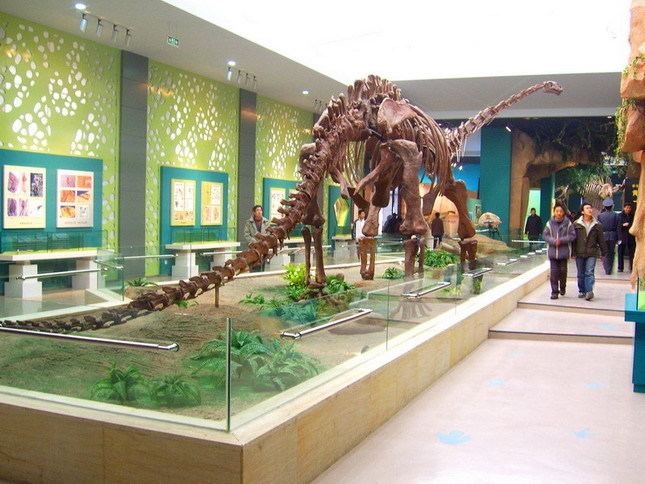Population 2.088 million (2000) Mayor Yuan Zhanting (???) | Area 13,300 km2 | |
 | ||
Colleges and Universities Lanzhou University, Northwest Normal University, Lanzhou University of Technology, Northwest University for Nationalities, Gansu Agricultural University | ||
Country Peoples Republic of China | ||
Map of Lanzhou
Lanzhou is the capital and largest city of Gansu Province in Northwest China. The prefecture-level city, located on the banks of the Yellow River, is a key regional transportation hub, connecting areas further west by rail to the eastern half of the country. Historically, it has been a major link on the Northern Silk Road. The city is also a center for heavy industry and petrochemical industry. Lanzhou was previously ranked as one of the cities with the worst air quality in the world, due to industrial pollution and its situation in a narrow river valley. Significant recent earthworks, removing parts of the sand and soil mountains surrounding the city, have succeeded in ventilating the city and allowing the displacement of air pollution. In 2015 the city was awarded China's climate progress title.
Contents
- Map of Lanzhou
- lanzhou lamian noodlesoup
- Lanzhou and the yellow river lanzhou et le fleuve jaune gansu china
- History
- Geography
- Climate and environment
- Environmental problems
- Earthquakes
- Sport
- Lanzhou New Area
- Tourism
- Museums
- Productivity
- Institutions
- Natural resources
- Industry
- Agriculture
- Airlines
- Subway
- Regional
- High speed rail
- Freight rail
- Road network
- Highways
- Bus services
- Bike sharing system
- Media
- Culture
- Colleges and universities
- List
- National level
- Other public institutions
- Healthcare
- Sister cities
- Food for foreigners lanzhou food
- References

Lanzhou is home to 3,616,163 inhabitants at the 2010 census and 2,177,130 in the built-up area (urban) of 1,088 square kilometres (420 sq mi).

lanzhou lamian noodlesoup
Lanzhou and the yellow river lanzhou et le fleuve jaune gansu china
History

Originally in the territory of the Western Qiang peoples, Lanzhou became part of the territory of the State of Qin in the 6th century BC.

In 81 BC, under the Han dynasty (206 BC–220 AD), it was taken from the Huns' Huandi Chanyu and made the seat of Jincheng commandery (jùn), and later of the Jincheng county (xiàn), later renamed Yunwu. The city used to be called the Golden City, and since at least the first millennium BC it was a major link on the ancient Northern Silk Road, and also an important historic Yellow River crossing site. To protect the city, the Great Wall of China was extended as far as Yumen. Parts of the Great Wall still exist within the built-up area.
After the fall of the Han dynasty, Lanzhou became the capital of a succession of tribal states. In the 4th century it was briefly the capital of the independent state of Liang. The Northern Wei dynasty (386–534) reestablished Jincheng commandery, renaming the county Zicheng. Mixed with different cultural heritages, the area at present-day Gansu province, from the 5th to the 11th century, became a center for Buddhist study. Under the Sui Dynasty (581–618) the city became the seat of Lanzhou prefecture for the first time, retaining this name under the Tang dynasty (618–907). In 763 the area was overrun by the Tibetan Empire and in 843 was conquered by the Tang. Later it fell into the hands of the Western Xia dynasty (which flourished in Qinghai from the 11th to 13th century) and was subsequently absorbed by the Song dynasty (960–1126) in 1041. The name Lanzhou was reestablished, and the county renamed Lanzhuan.
After 1127 it fell into the hands of the Jin dynasty, and after 1235 it came into the possession of the Mongol Empire.
Under the Ming dynasty (1368–1644) the prefecture was demoted to a county and placed under the administration of Lintao superior prefecture, but in 1477 Lanzhou was reestablished as a political unit.
The city acquired its current name in 1656, during the Qing dynasty. When Gansu was made a separate province in 1666, Lanzhou became its capital.
In 1739 the seat of Lintao was transferred to Lanzhou, which was later made a superior prefecture called Lanzhou.
Lanzhou was badly damaged during the Dungan revolt in 1864–1875. In the 1920s and 1930s it became a center of Soviet influence in northwestern China. During the Second Sino-Japanese War (1937–1945) Lanzhou, linked with Xi'an by highway in 1935, became the terminus of the 3,200 km (2,000 mi) Chinese–Soviet highway, used as a route for Soviet supplies destined for the Xi'an area. This highway remained the primary traffic route of northwestern China until the completion of the railway from Lanzhou to Ürümqi, Xinjiang. During the war Lanzhou was heavily bombed by the Japanese.
During the 1937 Japanese invasion of China, the Guominjun Muslim Generals Ma Hongkui and Ma Bufang protected Lanzhou with their cavalry troops, putting up such resistance that the Japanese never captured Lanzhou.
The city is the seat of a currently vacant Roman Catholic diocese and was previously the center of a vicariate apostolic (Vicariate Apostolic of Northern Kan-Su).
Geography
Lanzhou is situated on the upper reaches of the Yellow River where it emerges from the mountains and has been a center since early times, being at the southern end of the route leading via the Hexi Corridor across Central Asia. It commands the approaches to the ancient capital area of Chang'an (modern Xi'an) in Shaanxi province from both the west and the northwest, as well as the area of Qinghai Lake via the upper waters of the Yellow River and its tributaries.
Climate and environment
Lanzhou is situated in the temperate zone and enjoys a semi-arid climate (Köppen BSk) with hot summers and cold and very dry winters. The monthly 24-hour average temperature ranges from −5.3 °C (22.5 °F) in January to 22.4 °C (72.3 °F) in July. The mean annual temperature is 9.75 °C (49.5 °F), while annual rainfall is 315 millimetres (12.4 in), almost all of which falls from May to October. The winters are so dry that snow is extremely rare. With monthly percent possible sunshine ranging from 50 percent in December to 59 percent in February, sunshine is generous but not abundant, as the city receives 2,424 hours of bright sunshine annually.
Environmental problems
The city is located in a narrow and curved river valley with surrounding mountains causing it to be hemmed in blocking a free flow of air. Lanzhou repeatedly has had the worst air quality of any of 84 Chinese cities surveyed. According to the National Environmental Analysis released by Tsinghua University and The Asian Development Bank in January 2013, Lanzhou is among one of ten most air polluted cities in the world. Air quality reportedly was so poor that at times one cannot see Lanshan, the mountain rising up along the south side of the city. Lanzhou is also the home of many factories, including some involved in petroleum processing, and suffers from large dust storms kicked up from the Gobi Desert, especially in the winter and spring. In 2011, using Chinese statistics, the World Health Organization reported that Lanzhou has the worst air quality (annual mean PM10 ug/m3 of 150) among eleven western Chinese cities, and is worse than Beijing with its reading of 121.
Since then, authorities have taken measures to improve air quality, which have largely been successful. "Thirteen polluting enterprises with excessive capacity have been closed, more than 200 highly polluting enterprises were suspended in winter, and 78 industrial enterprises have moved to an industrial park outside the city." In 2015 it was awarded China's climate progress title. As a city once unable to be spotted from satellites, Lanzhou has taken various measures to combat air pollution in recent years, having reduced its Air Pollution Index at the fastest speed across China.
The reach of the Yellow River at Lanzhou carries a high load of silt, giving the river its characteristic muddy appearance; however water quality in this reach is better than the "fetid outflow that barely passes for water two hours downstream".
On April 11, 2014 Lanzhou officials advised residents not to drink tap water, because benzene levels were 20 times the national limit of 10 micrograms per liter. The city water supply suspected industrial chemical production to be the culprit, similar to what happened in 2005 Jilin chemical plant explosions.
Earthquakes
Lanzhou experiences earthquakes regularly, although usually at low intensities. In 1920 a large earthquake was experienced killing more than 100,000 people in Eastern Gansu province, although only 42 were killed in Lanzhou itself, the low number being attributed to the strong yet flexible nature of the wooden buildings in the city.
Sport
The 14,000-capacity Northwest University for Nationalities Stadium is one of the main sports venues in the city. It is mostly used for football games. A new sports center complex, including a stadium with a capacity of 60,000 spectators and a swimming hall, is under development.
Lanzhou previously had a professional soccer team named Gansu Tianma F.C. from 1999 to 2003. The team played in Chinese Football Association Yi League from 1999 to 2001 and bought a position in the Jia League from Tianjin Lifei. The team relocated to Ningbo, Zhejiang and changed their name to Ningbo Yaoma (Simplified Chinese: 宁波耀马) in 2003. The team later relegated to the Yi League in 2004 and sold to Dongguan Dongcheng, who moved the club to the Hong Kong First Division League.
Former England international Paul Gascoigne played four games in both a playing and coaching role for Gansu in 2003, scoring two goals, before returning to England after falling out with the club, as his mental state meant that he had to return to America for treatment against drink and depression.
Lanzhou New Area
On 20 August 2012, Lanzhou New Area was approved by the State Council of China's Central Government as the fifth state-level new special economic development zone (followed by Pudong of Shanghai, Binhai of Tianjin, Liangjiang of Chongqing, Zhoushan of Zhejiang), which is also the first state-level new area in the northwest of China. The area has been described as a ghost town, as it has failed to attract anywhere close to the anticipated number of inhabitants.
Tourism
Museums
Productivity
Since 1949 Lanzhou has been transformed from the capital of a poverty-stricken province into the center of a major industrial area.
The GDP per capita of Lanzhou was 25,566 (RMB) (US$3,681) in 2008, ranking it at number 134 among 659 Chinese cities. In 2015, the GDP per capita had grown to 57,191 RMB (US$9182.28) and the city ranked at place 100 for total GDP of Chinese cities.
Institutions
The International Solar Energy Center (UNIDO-ISEC) is located in Lanzhou's Chengguan district.
Natural resources
There is a thermal generating plant supplied with coal from fields in Qinghai. In addition, there is a hydroelectric station at Zhulama Gorge in Gansu, and a large multipurpose dam has been built in the Liujia Gorge on the Yellow River above Lanzhou.
Industry
Main industries include textile mills, rubber processing and fertilizer plants, an oil refinery, petrochemicals, machinery, and metallurgical industry.
Gansu has one of the largest oil refineries in the country and Lanzhou itself is the center of the province's petrochemical industry. The refinery is linked to the fields at Yumen by pipeline. It also manufactures equipment for the oil industry.
Lanzhou has a large textile industry, particularly noted for the production of woolen and leather goods. In addition, Lanzhou produces locomotives and rolling stock for the northwestern railways, as well as machine tools and mining equipment. Aluminum products, industrial chemicals, and fertilizers are produced on a large scale, and there is a large rubber industry. Copper is mined in nearby Gaolan.
Lanzhou has been one of the centers of China's national nuclear power industry since the 1960s.
Agriculture
Lanzhou is the collecting center and market for agricultural produce and livestock from a wide area.
Airlines
Subway
Lanzhou was the second city in northwest China to announce the construction of a subway line, in August 2012. The urban railway network, Lanzhou Metro, is planned to consist of six subway lines running 207 km (129 mi). The first line, to be completely underground, missed its completion deadline of 2016.
Regional
Lanzhou Railway Station is a major railway hub of western China. Every day over 100 passenger trains originate or pass via this station. It is a vital focal point connecting the western Chinese provinces with the east. Lanzhou Railway Station is located on Huochezhan Dong Lu, in Chengguan district. Lanzhou West Railway Station is the city's second major railway station, offering connection to high-speed rail services.
Lanzhou Railway Station has the following railway connections:
High speed rail
Construction of new high-speed passenger-only railway lines is carried out both toward the east (the Xulan Passenger Dedicated Line) and the west (the Lanxin High-Speed Railway). These services will only stop at Lanzhou West Railway Station.
Freight rail
Lanzhou forms an important link in one of the routes of the Eurasian Land Bridge and also provides rail access to Qinghai, Xinjiang and Tibet further to the west. A large rail freight terminal has recently been constructed to accommodate increasing volumes of rail freight and Lanzhou is home to China's fourth largest marshalling yard.
Regular freight services connect Lanzhou to destinations including Chongqing, Hamburg, Almaty and Kathmandu.
Road network
In 2016, Lanzhou was ranked 4th of Chinese cities with the worst rush hour traffic jams.
Highways
Bus services
Lanzhou has a noted bus rapid transit system which opened in 2013 and won the city an honorable mention at the 2014 Sustainable Transport Awards.
Other services connect to local and provincial areas.
Bike sharing system
An in 2014 inaugurated bike sharing system covers mostly the Chengguan District with 377 stations. The system had a successful start and the number of stations is being expanded. However, vandalism proved to be a problem, with 600 (out of a total of 6,500) bikes a year not being returned to the stations. As bikes are not rented out anymore late at night, people reportedly outed their frustration on the bikes in the case they were too late to rent one.
Media
Culture
The city is the cultural centre of Gansu. It is home to many different ethnic groups and their respective cultures, but the most prominent three groups are the Han, Hui, and Zang.
Colleges and universities
The city is the seat of Lanzhou University, founded in 1909. The National Minorities Institute at Lanzhou and a branch of the Chinese Academy of Sciences are also located in the city. In particular, Northwest Normal University has been the key university at the provincial level, which has prepared over 100,000 teachers in schools across the province Gansu.
List
Note: Institutions without full-time bachelor's degree programs are not listed.
National level
Other public institutions
Healthcare
According to the provincial health bureau, about 42,000 people die of cancer every year in Gansu, accounting for 25 percent of the province's overall deaths. More than 1 billion yuan (146 million U.S. dollars) is spent annually on treating cancer in the province.
